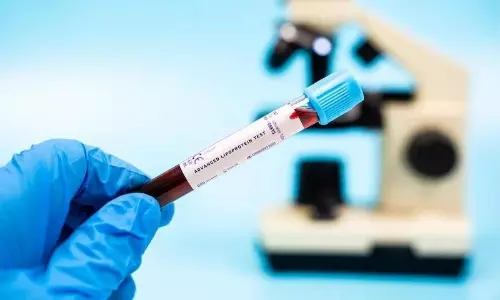
Heart to Heart
text_fieldsDr. Joji Mathews MD, DNB(Cardiology), Dip IBLM
Specialist Cardiologist
Aster Medical Center, Hilal.
CVD-Description and scope:
Cardiovascular diseases (CVD) encompass disorders of the heart and blood vessels. An estimated 17.9 million lives succumb to CVD. Heart attacks and strokes account for four out of five CVD deaths.
Symptoms that herald CVD:
Chest pain, breathing difficulty, palpitations, fatigue, swelling of the feet, profuse sweating, fainting and bluish discolouration of the skin are some of CVD symptoms. However, other diseases can also have similar symptoms. It is important to seek a physician's opinion when one experiences such symptoms.
Who is at risk:
The risk factors of CVD can be categorized as non-modifiable (age, sex, ethnicity and family history) and modifiable (hypertension, dyslipidemia, diabetes, smoking, poor diet, physical inactivity and stress). Though the non-modifiable risk factors contribute up to 80% of the risk, control of the modifiable risk factor can result in a substantial reduction in cardiovascular events.
Addressing the modifiable risk factors:
Elevated Blood pressure (Hypertension= Clinic BP>140/90mmHg): One out of three patients have hypertension. Only 54% of these achieve adequate control (Optimal targets are determined according to age and risk factors). A 20mmHg reduction in systolic BP and a 10mmHg reduction in diastolic BP decrease death by 50% in ages between 40-49yrs and by 33% in the 80-89 age group.
Dyslipidemia: It is the second common risk factor for heart artery blockages. Cholesterol reduction based on the risk profile (low to very high) reduces the risk of major cardiovascular events.
Diabetes: Heart disease is approximately 2.5 times higher in adult patients with diabetes compared to those without diabetes. A 0.5% reduction in HbA1c conferred 20% less hazard risk for major cardiovascular events. Treatment should target the optimal control of diabetes (HbA1c <7%).
Obesity: It is an independent risk factor for developing coronary artery disease(CAD) and in addition, other risk factors of CAD like hypertension, hyperlipidemia and diabetes. Individuals with cardiovascular risk factors and Body Mass Index(BMI)>25 and those with BMI>30 should consider a comprehensive lifestyle intervention program. Target to reduce 5-10% of initial body weight over 6 months. 3-5% reduction of weight reduce blood glucose and triglyceride levels and above 5% can improve blood pressure control and result in dyslipidemia correction.
Smoking: Tobacco products kill 1 out of 2 users. Smoking causes 87% of lung cancer, 32% CAD and 80% Chronic obstructive pulmonary disease (COPD) related deaths. Almost 40+ cancers involving various parts of the body are related to tobacco use. Non-smokers regularly exposed to second-hand smoke have a 25-30% risk of CAD. Quitting smoking reduces the risk of various diseases. Medical assistance yields better results of smoking cessation.
Physical Inactivity: Physical activity is any movement of the body through skeletal muscle contraction. Exercise, on the other hand, is repeated organized physical activity aimed at improving or maintaining one's health. Those who are physically inactive have a 12.2% risk of Heart Attack. Exercise promotes health and prevents diseases via various mechanisms. Exercise should include:
a) minimum of 150 minutes of moderate-intensity (can talk but not sing during activity) aerobic exercise.
b) Strength training of major muscle groups (chest, back, shoulder, biceps, triceps, abdomen, quadriceps and hamstrings) 2-3 times per week.
c)Stretching all the muscle groups for 10 minutes 2-3 times per week.
d) Balance e.g., Tai-chi, Yoga.
Those with cardiovascular, metabolic and renal disease should be evaluated if they are symptomatic or if they are planning to do intense exercise. Avoid extreme levels of exercise to the point of exhaustion and injury.
Poor Diet: Diet rich in Trans Fats is associated with 23% CAD risk. Diet in which 10-24.9% of calories comes from added sugar is associated with 30% cardiovascular deaths and can increase to 175% when more than 25% of calories are from added sugar. Red meat is associated with 15-29% risk of CAD and cardiovascular events, whereas with processed meat, the risk was 23-42%. Heart health improved with the DASH-Dietary Approach to Stop Hypertension diet (21% Cardiovascular risk reduction), Mediterranean diet (20-25% reduction), consumption of fruit and vegetables (8%). CAD risk reduced by 29% with consumption of nuts 28g/day. In general, they are diets rich in fruits, vegetables, whole grain cereals, nuts, includes low-fat dairy, poultry and fish and limits food rich in saturated fats.
Sleep: 7 hours of sleep is recommended. Impaired sleep is associated with increased heart attacks, cardiovascular deaths and uncontrolled hypertension. It also correlates inversely with diabetes and obesity. Certain practices that improve sleep include: Establishing a regular time to go to bed and to wake up, using the bed to sleep and not to read, watch TV etc., setting optimal room temperature, taking a warm bath, increase daytime exposure to sunlight to regulate melatonin, avoiding the use of mobile device emitting blue light that suppresses melatonin, changing to warm lights 1 hr before bed, avoiding alcohol or caffeinated beverages 3 hrs before sleep and winding down 1 hr before bed with music, meditation etc.
Stress: Mental stress is a cardiovascular risk. Stress can trigger cardiovascular events via multiple mechanisms. In a very broad sense, stress is a feeling that is consequent to a thought. Stress management centres around renewing the processing of thoughts and, when necessary, taking supporting medications and other treatment modalities.
Management of CVD: Investigations are selected according to suspected CVD. Once a diagnosis is established, treatment is instituted by a combination of lifestyle modification, medications, non-surgical or surgical interventions as deemed appropriate for the individual's situation.
Awareness and consequent responsible action rather than reacting in fear is the way forward to prevent and mitigate the outcomes of cardiovascular diseases. Be Hearty and live healthy!























